Content:
This flower is known and loved by gardeners. All varieties and types of buzulnik are appreciated for their unpretentiousness, elegant appearance, the opportunity to enjoy the annual exuberant flowering for decades from mid-July to late October. The plant is widely used by landscape designers to create their masterpieces. Buzulniks or ligularia are common throughout Eurasia, there are more than 150 species of them. On the territory of Russia, only one species grows in natural conditions - Siberian Buzulnik.
Buzulniki: all varieties and types
This plant of the Astrov family, a genus of perennial grasses, has a powerful deciduous root system with large decorative leaves, the shape of which varies depending on the type of buzulnik - it is triangular, rosette, heart-shaped. From a deciduous rosette, flower stalks topped with flowers rise to a height of 2 meters. Inflorescences look differently depending on the variety. The color range is from bright yellow to orange or almost brown.
They bloom up to two months a year - from June to August, or from July to September, and some - from August to October. Buzulnik bushes grow well in the shade, next to water bodies. They are not demanding on the soil, they are unpretentious, although moist soil with good drainage is what the agricultural technician ordered to the buzulnik.
Buzulnik Osiris Fantasy
A beautiful ornamental plant, which has especially good copper-colored leaves with a patina, large, rosette. The height of the peduncles is from 1.5 to 2 meters. The flowers are bright yellow, serrated. The features of its reproduction are as follows:
- Can be planted directly into the ground with seeds in April - May. In this case, the Osiris buzulnik will bloom only in the next year after disembarkation.
- When planting seedlings in May-June, you can also count on flowers only next year. The bush should root properly.
- Reproduction by dividing the bush into several roots allows us to expect flowering already this year.
They plant it in shady places, but not in a draft.
Buzulnik Little Rocket
This is a kind of narrow-headed Buzulnik. The name narrow-headed was obtained by him because of the shape of the inflorescences - paniculate or racemose. This moisture-loving plant is planted in shady places on the banks of water bodies. The leaves of the Little Rocket cultivar are bright green, heart-shaped. The edges of the leaves are serrated. Inflorescences are yellow. Its distinctive features:
- height no more than 90 cm;
- grow in one place for 10-15 years;
- reproduce by dividing the bush or by seeds, but the seeds must be grown in a greenhouse or at home, and planted in the ground with seedlings.
- blooms from mid-July until the first frost in autumn.
An advantage can be considered the unpretentiousness of the rocket buzulnik - it does not need special care, frost resistance - it hibernates without shelter.
Buzulnik Granito
This is a hybrid Granito variety, which was bred by breeders specifically for border planting when framing garden paths or flower beds. Its distinctive features:
- This is an ornamental dwarf plant with very beautiful carved leaves with marble streaks on a pale green background. Cuttings of leaves are purple-red.
- Crimson flower stalks are crowned with large yellow chamomile flowers. The flower petals are slightly curved downward. The core of the flower is brown, densely covered with stamens. It turns out a shaggy cushion, framed by graceful curved petals.
- The height of the peduncles does not exceed 60 cm, which distinguishes this cultivar from all other flowers of this genus.
- He is a lover of shaded areas and wet soil.
- Blooms from mid-June to mid-August.
- Planting is carried out in the spring when separating the bushes. You can grow seedlings from seeds.
Buzulnik Wilson
The homeland of this plant is Central China. Its name in the botanical reference is Ligularia wilsoniana. This type of ligularia belongs to tall buzulniks. The length of its stems is up to 2 meters. The characteristic features of this species are as follows:
- The leaves are large, jagged at the edges, bright green.
- Inflorescences are yellow, rosette, 2.5 cm in diameter, collected in oblong fusiform racemes, crowning peduncles.
- Prefers fertile, moist soil.
- Rather shade-loving, but with sufficient soil moisture, it can live on the sunny side of the garden.
- In landscape design, it is used in mixborders. It mixes well with miscanthus, rogersia, spotted loosestrife and other varieties of ligularia.
- Propagated by dividing the bush or seeds, which are planted directly into the ground.
- The recommended planting is 3-4 bushes per 1 sq. M.
Buzulnik Vorobyova
This variety is native to the Far East, where it grows in natural conditions. Like Siberian buzulnik, it is not only a decoration of personal plots, but also has medicinal properties. The dried grass and flowers of these types of buzulnik are used in Siberia as a remedy for colds, intestinal disorders and even for weight loss. It looks like this:
- Tall - up to 2 m in length.
- Yellow inflorescences are collected in high corollas.
- The leaves are very large, bright green.
- The bushes are powerful, therefore they need to be planted at a distance of at least 1 meter from each other.
- Inclined to self-seeding, because it is unpretentious. Therefore, it is better to collect the seeds in time so that the garden does not overgrow with busulnik.
- Requires almost no maintenance, the only condition is always moist soil.
- It is frost-resistant, does not require cover.
- It blooms in late August and blooms until the first frost.
Fisher's buzulnik (Ligularia fischeri) has the same properties and a similar appearance. He is a fellow countryman of Vorobyov and Siberian Buzulniks. The description of this variety coincides even in details with the described Far Easterners.
Buzulnik toothed Midnight Lady
Botanical name of the variety is Midnight Lady. A very beautiful ornamental plant. Spectacular leaves - large purple, almost black from the inside, collected in a lush basal rosette up to 60 cm in diameter. The inflorescences are large - up to 7-8 cm in diameter. Ligulate and tubular petals from light orange to brown. The height of the peduncle is 80 cm. Less often it is up to 120 cm. Characteristic features of the variety:
- The soil should be moist and well fertilized.
- It is better to plant the bushes in the fall, by dividing the bush. It is better to plant seedlings in the spring.
- They live in the garden for at least 10 years.
- Landing at a distance of at least 1 meter from each other.
- A great decoration for artificial ponds, although they are used by designers and in mixboards.
Buzulnik Garden Confetti
This variety got its name "Garden Confetti" (Ligularia Garden Confetti) not by chance, for the variegation of leaves of the root rosette. It is a type of toothed buzulnik with yellow chamomile flowers. But all the beauty of this variety is not in the flowers, but in the leaves. The fact is that throughout the season, the color of the leaves is constantly changing:
- in early summer, heart-shaped leaves are painted in a pale cream color with pink and greenish veins;
- by the middle of summer, the background changes to bright yellow, and by the end of the season - to burgundy with green veins.
- the seamy side of the leaves and their cuttings are invariably red.
"Landscapers" very often use this ornamental plant to decorate shaded areas, because it does not like direct sunlight. The soil prefers moist and fertilized.
Buzulnik Vicha
Ligularia veitchian flower is native to western China. This is a tall buzulnik, the height of the peduncle reaches 2 meters. The inflorescence is spike-shaped, yellow. A flower basket with a diameter of 2.5 cm.Flowers bloom from the bottom up along the spikelet. They bloom for a month, usually in late summer.
The leaves of the root system are large, heart-shaped, smooth, bright green. The edges of the leaves are serrated. Unpretentious, tolerates severe frosts without shelter. Sun tolerates well in moist soil. The requirements for agricultural technology are as follows:
- Reproduction methods are by dividing the bush and planting seeds in open ground in early spring.
- The distance between the bushes is at least 1 meter.
- The pH of the soil is slightly acidic. Prefers light loams.
Designers use it in flower beds as a center plant or decorate natural reservoirs with it.
Buzulniki, or lagularia, are excellent unpretentious garden ornamental plants. They will decorate household plots and will delight for many years with their appearance and flowers.
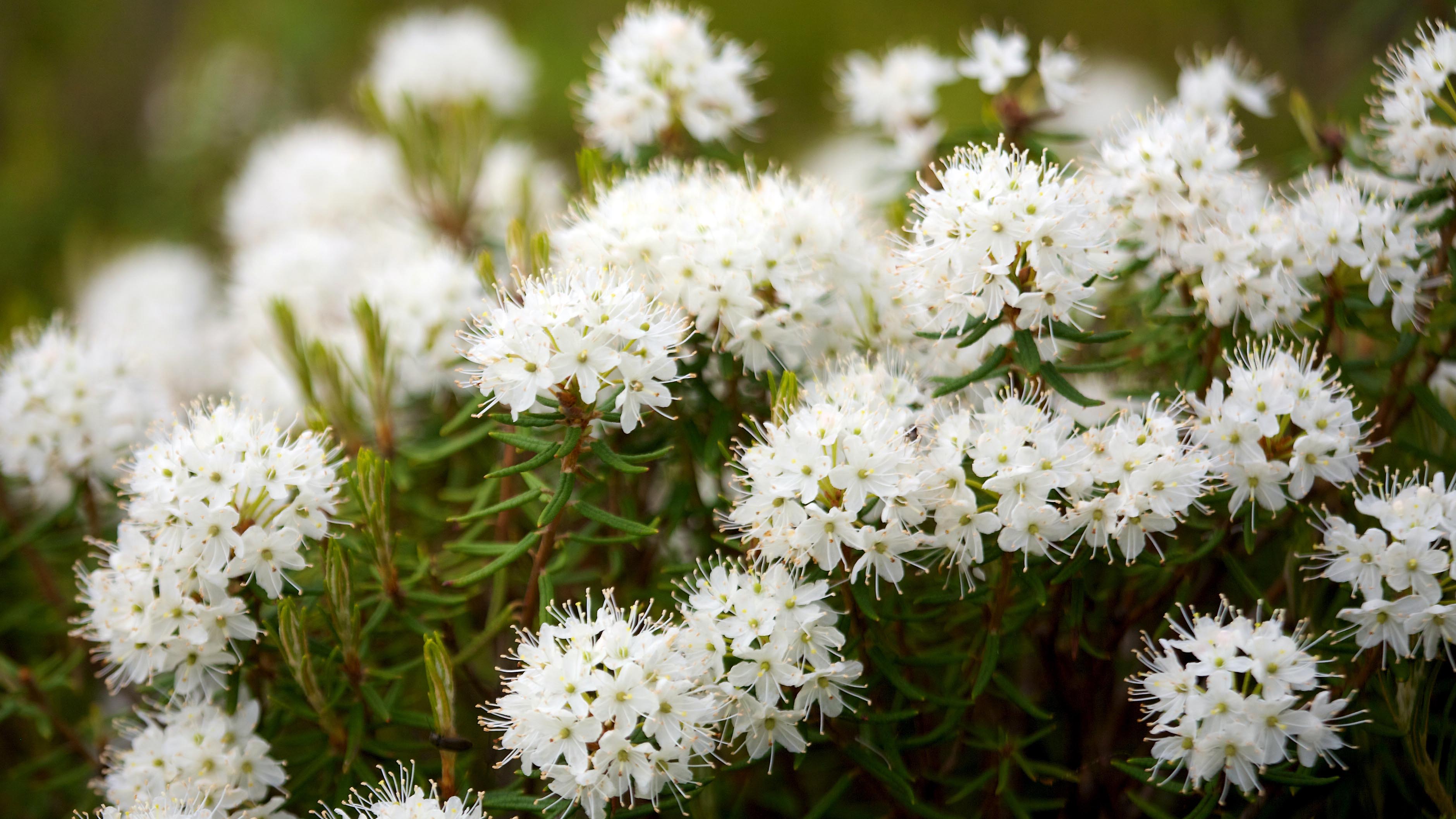
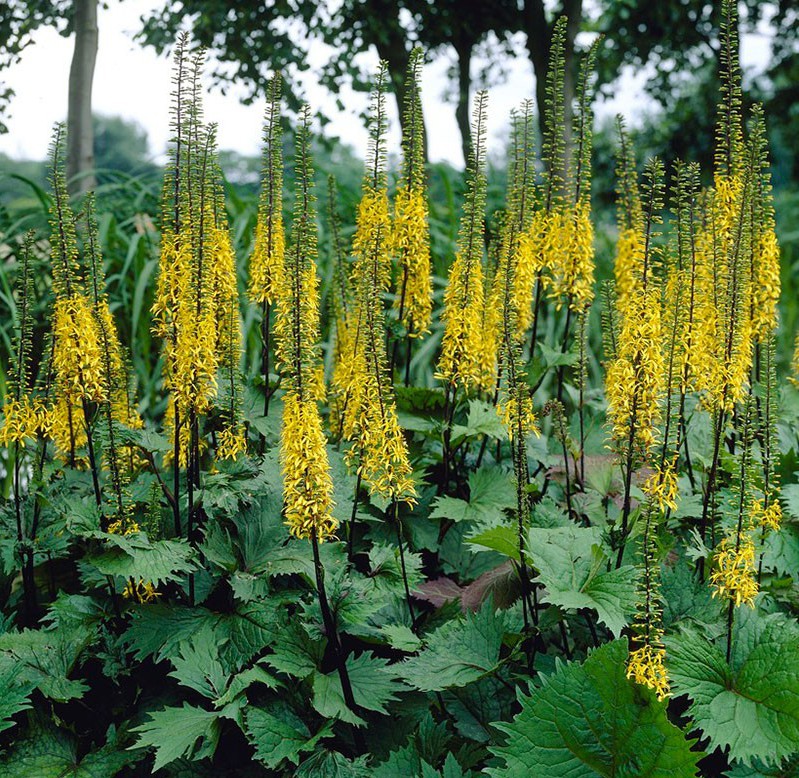
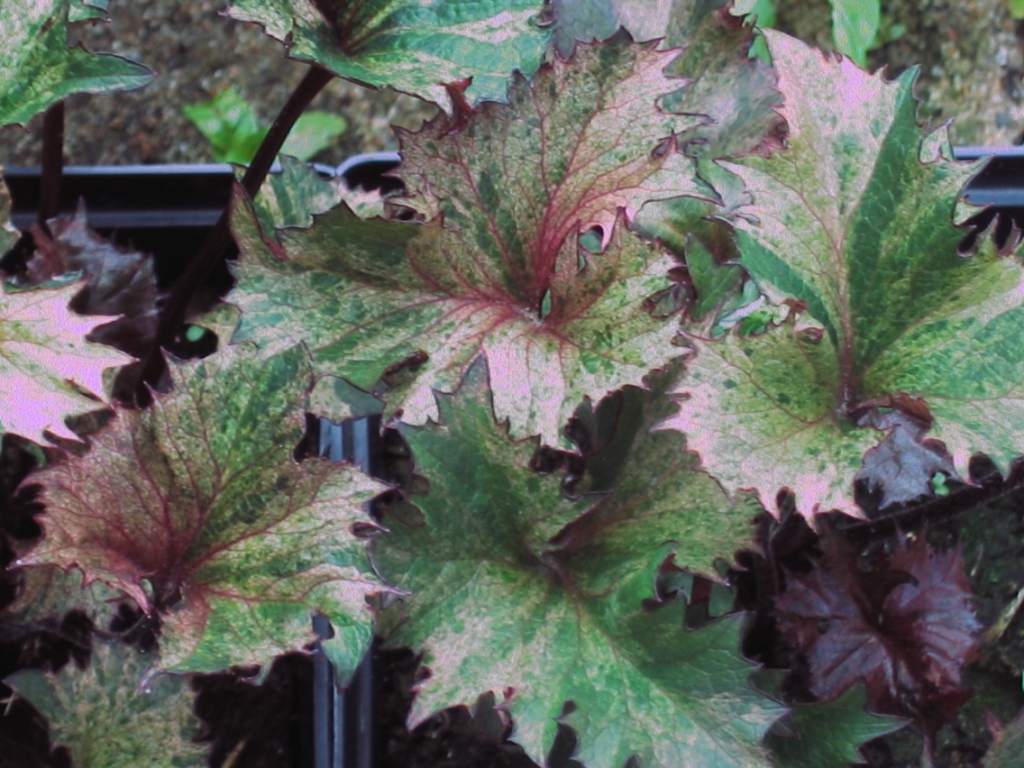
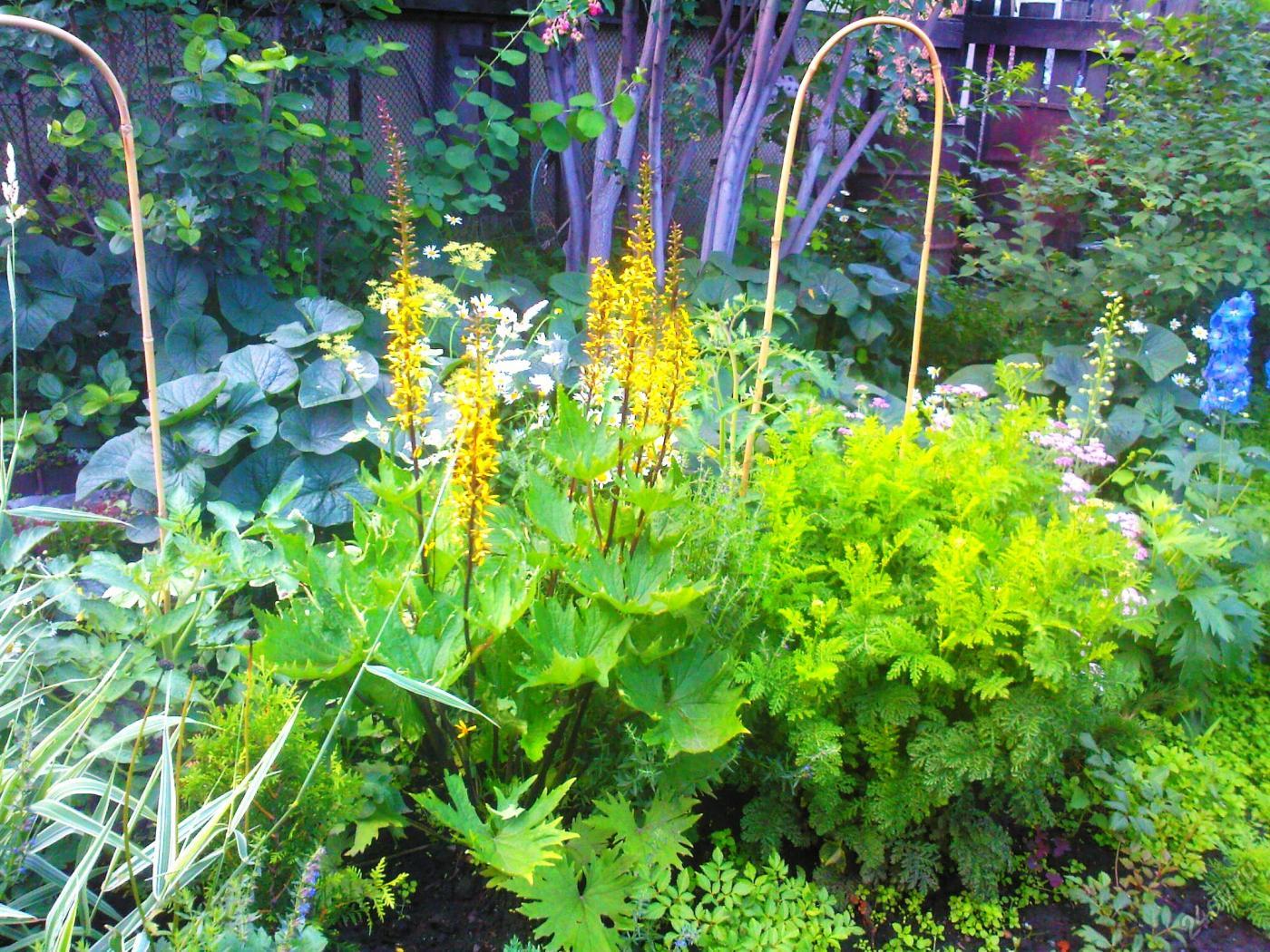
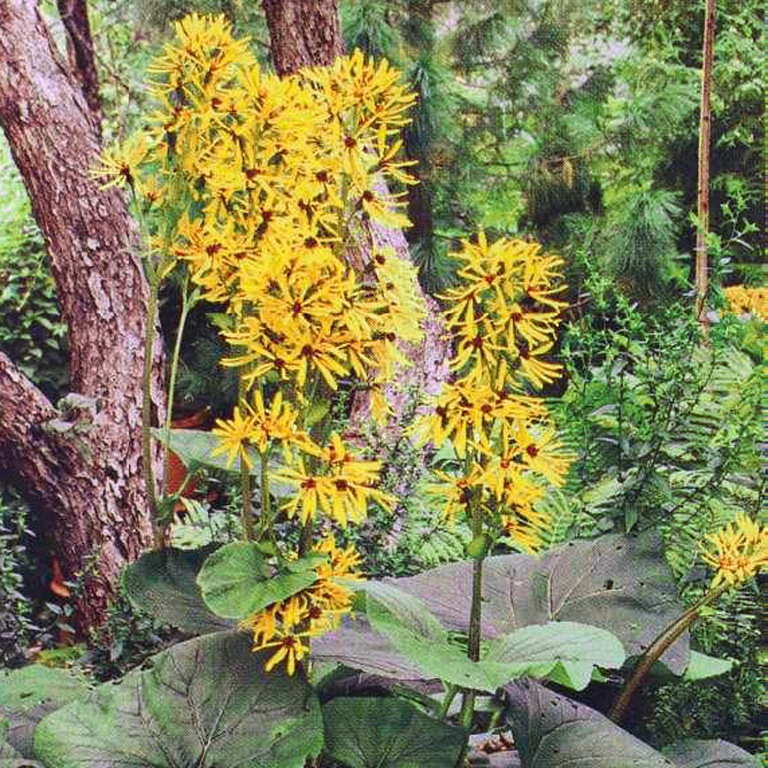
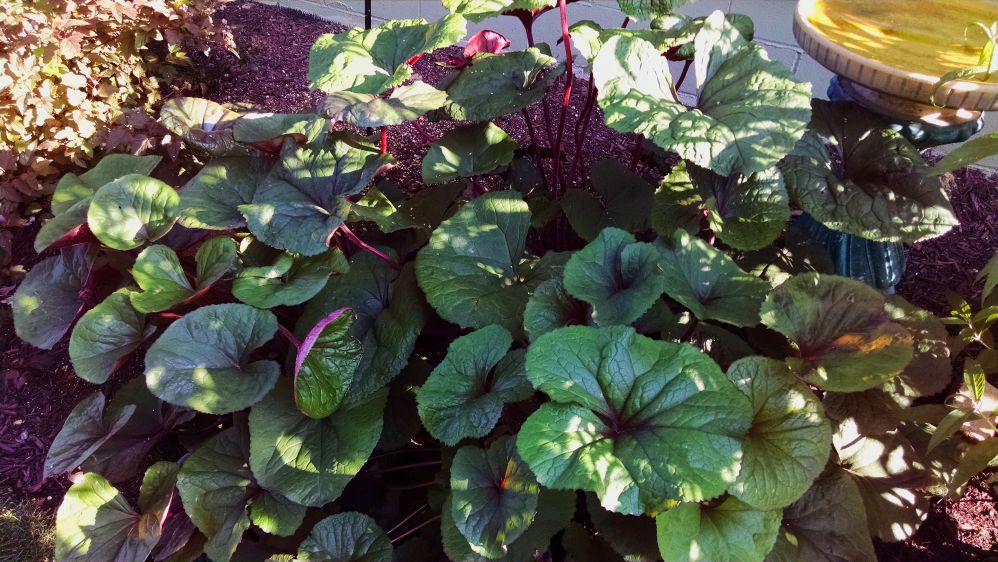
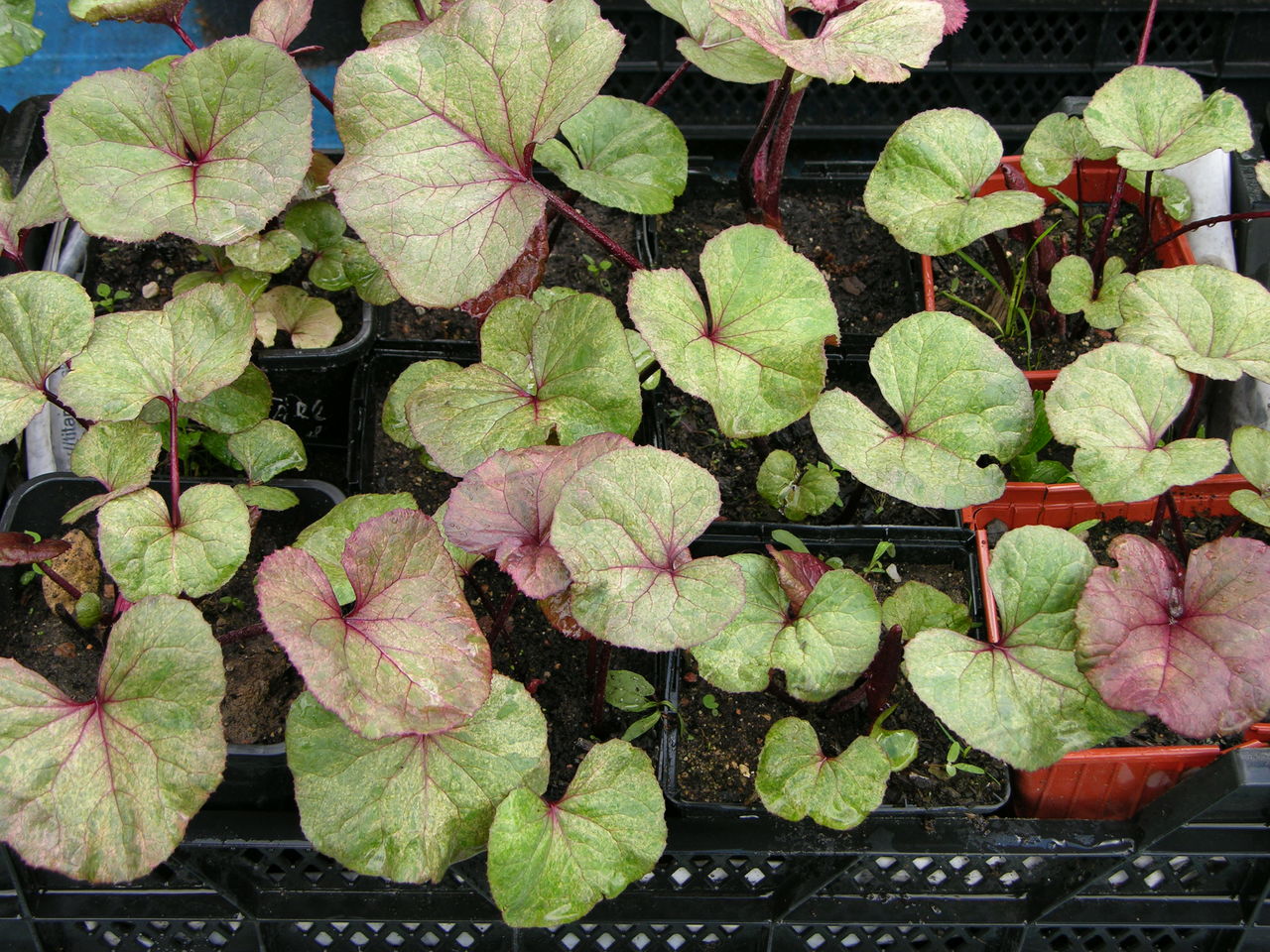
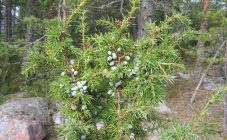
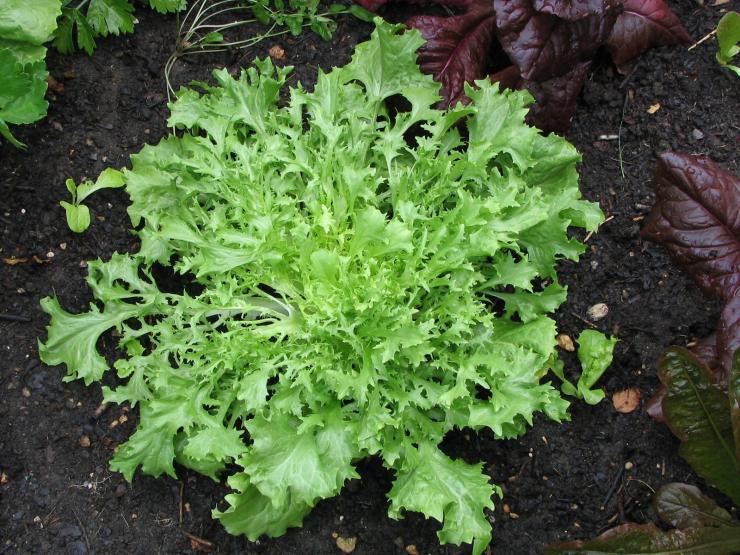
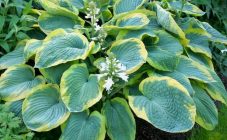


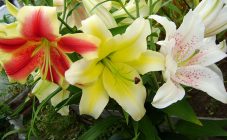







The first photo shows not a buzulnik, but a rosemary! I did not read further, since the level of the author of the publication is clear.